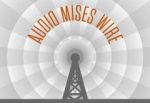Since the sixth century BC reign of Croesus of Lydia, refined gold has served as a monetary store of value. Today, many central banks, including the European Central Bank, the Swiss National Bank, the German Bundesbank, the Bank of France, the Bank of Italy, the Dutch National Bank, the Bank of Japan, the Reserve Bank of India, the People’s Bank of China, and the Monetary Authority of Singapore among others, hold gold as an investment and reserve against their monetary liabilities. It may surprise some that, in contrast, the Federal Reserve owns no gold at all.The original 1913 Federal Reserve Act required the Fed to hold substantial amounts of gold to back its outstanding Federal Reserve Notes and member bank deposits. In 1934, the Roosevelt administration pushed for, and Congress passed,
Read More »

























